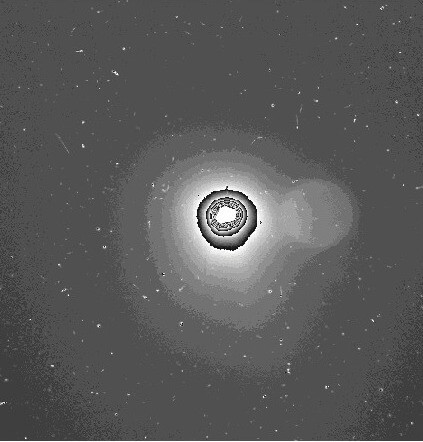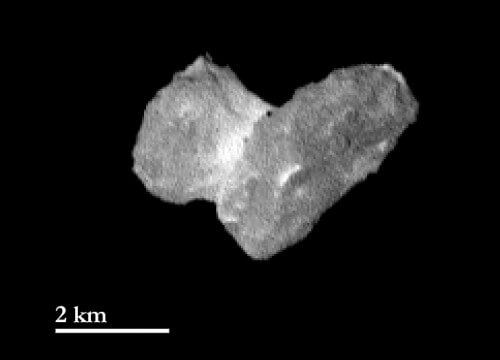One instrument on the spacecraft photographed the halo surrounding the core - an atmosphere consisting mainly of dust. The halo extends to a distance of 150 kilometers in each direction

Less than a week before the Rosetta spacecraft meets comet 67P Churyumov-Gardimenko, the OSIRIS instrument on board took an image of the comet's nucleus that also shows the halo of dust surrounding it.
The image, taken on July 25, clearly shows the halo rising above the comet nucleus. "Our kernel image covers an area of 150 square kilometers," says Luisa Lara of the Institute of Astrophysics in Andalusia, Spain. Most probably the images show only the inner part of the comet's halo or atmosphere, where the particle density is the greatest. The scientists predict that the full halo of the comet spreads to a much greater distance.
In the new image, the vague spherical structure in bright colors on the right side of the comet's nucleus is due to a phenomenon that originates from the optical system of Osiris. The center of the image is around the position of the nucleus and it is visible in the overexposed image.
Additional new images of the nucleus of the comet show that the collar-like shape near the neck of the nucleus appears brighter than the rest of the comet. The hypotheses range from differences in the source of the materials, through the size of the grains to a topological effect.
After approaching and attaching to its orbit, Rosetta will begin two massive months of mapping the comet's surface, providing data on the comet's gravity, mass and shape, and evaluating the composition of the atmosphere or halo, which consists of gas and dust.

The orbiter will also study the plasma environment and analyze how it interacts with the Sun's outer atmosphere or solar wind. In November, it will launch the Philae rocket, which will land on the comet.
More on the subject on the science website

One response
moving!!!